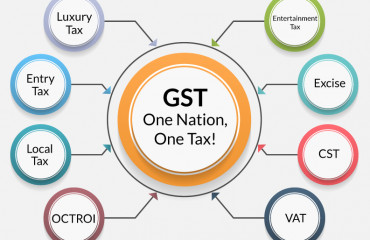
In every aspect of life, we have choices and what we choose depends on us. The choices we make mould us. If we see threats, we will be on the back foot, and if we see an opportunity, we work towards making the most of it. Today, economies across the world are being reset on account of inflation inflicted by geo-political turbulence and action taken by some of the most powerful countries in dealing with their economies. The impact of their decisions can be felt worldwide.
In every aspect of life, we have choices and what we choose depends on us. The choices we make mould us. If we see threats, we will be on the back foot, and if we see an opportunity, we work towards making the most of it. Today, economies across the world are being reset on account of inflation inflicted by geo-political turbulence and action taken by some of the most powerful countries in dealing with their economies. The impact of their decisions can be felt worldwide.
If we look at what has transpired in the past 15 years, every adversity was also an opportunity. With the benefit of hindsight, we can all discuss how it would have been prudent to grab those opportunities, but fear and noise tend to restrict most of us from taking rational decisions. It would therefore help if we could cancel out some of the noise that has lingered around in the current scenario, be it about the Indian currency's recent depreciation, high inflation or low growth.
The rupee has depreciated against the US dollar, but that's not the complete picture: Trades took place when our currency was at 50 to the dollar, and trades happen at current levels as well. More than the absolute value of a currency, what matters is its stability. Slow and steady appreciation or depreciation has no adverse impact. By now, everyone knows that as the US Federal Reserve decided to raise interest rates, the funds funnel turned towards the US, and this shift in global flows has led to a stronger dollar. However, an important point to note is that not all currencies have reacted in the same way. The Indian rupee has indeed depreciated against the dollar, but it has appreciated against other major currencies. And we are not alone; some of the other currencies in Asia have also done well.
This outperformance by our rupee is despite the fact that we are a net importer of oil, which leads to a trade deficit. Even on the trade deficit front, the absolute number may look like a matter of concern, but as a percentage of total trade, this gap is far from alarming levels. Our foreign exchange reserves as a proportion of gross domestic product (GDP) too make our currency one of the stronger ones among those in a basket of consideration apart from the dollar. The current demand for dollars is more of a realignment and not driven by the long-term economic outlook.
Inflation is high but not structural in nature: Beyond a point, inflation hurts everyone. High inflation has gripped all economies because this is cost-push inflation. Any student of economics will back the thought that raising interest rates is not the only solution to reduce inflation which is caused by supply constraints. The Reserve Bank of India (RBI) has swallowed all the criticism of being behind the curve in the first quarter of 2022, but we believe it was prudent to not increase policy rates proactively in an inflationary environment that was not demand driven. RBI took the right step by assessing the global situation and adopting a reactive approach.
The government too has played an important role in managing domestic inflation by taking various measures, especially in the oil space. Its reduction in excise duty on fuel was a big relief from a short-term perspective, while its policy on ethanol blending will also assist the cause from a medium-term perspective. Increasing export duties on some of basic commodities was another effort towards managing their prices, despite these being globally linked. Various ongoing programmes under the Pradhan Mantri Awas Yojana have also been contributing towards the easing of inflationary pressure at the bottom of the pyramid.
Though it's too early to make a clear assessment, this combined effort of RBI and the government, plus some easing of commodities prices has seen inflation showing a downtick and now looks stable around 7%. This is a far better scenario than in the US, where inflation is hovering around 9% and the Fed is in a dilemma of increasing interest rates further at the cost of inducing a recession.
India's economy is on a high-growth launch pad: The biggest boost for growth comes from private investments in the form of capacity expansion. The current range of 70-75% capacity utilization is now pushing corporate India to put up new capacities. Currently, corporate balance sheets are not leveraged enough, which indicates the possibility of meaningful capacity expansion in the coming years. The country's banking system is adequately capitalized for lending and the quality of books is far better than in the pre-covid era. Credit offtake data too suggests that lending is gathering steam.
Government finances in such a period may go for a toss, leading to an increase in its fiscal deficit. However, robust GST collection, be it due to growth or an increase in tax collection efficiency, provides us much needed comfort. Once our inflation worries settle down, a small push for growth by the government will lead to a cascading effect that should take our economy onto a high-growth trajectory.
The entire world is going through challenging times, dealing with inflation, low growth and geo-political issues, with the covid scare still lingering. We cannot decouple ourselves from these worries. But in all challenging times, there arise great opportunities. We believe that India is perfectly poised today to ride a multi-year trend of high growth.
